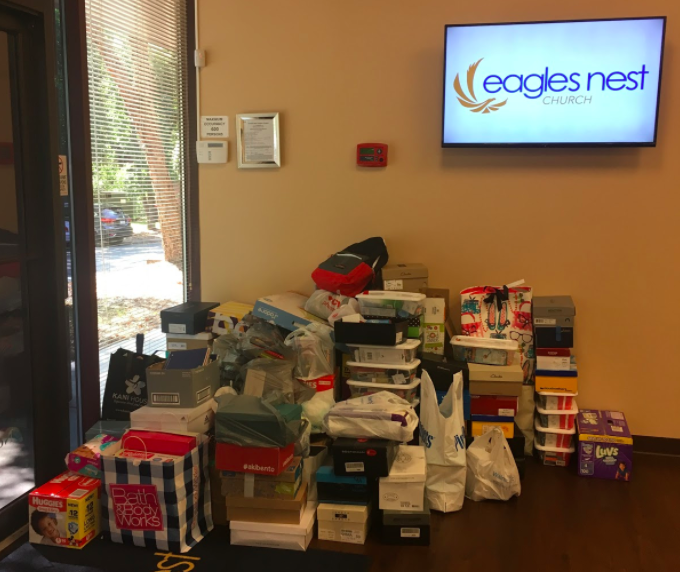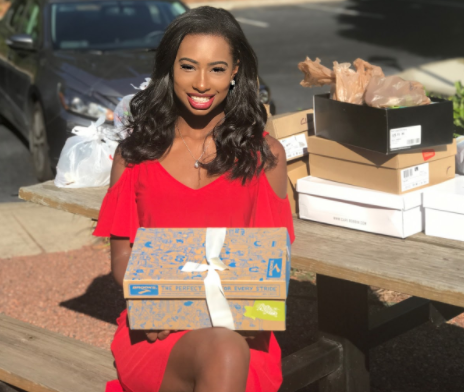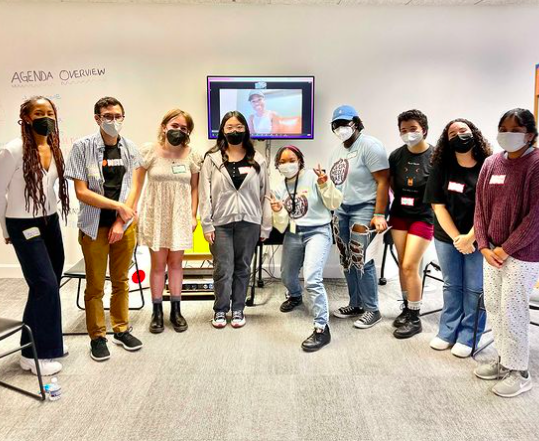Close your eyes. Take a moment to imagine yourself in your home. Think of how safe you feel. Imagine yourself in the comfort of your bedroom. Think of the items you feel an attachment to in your life. Now think of your life outside of home. Think of the people important to you and the places you go. Look at your life from the outside in, as if you are just watching.
Now, open your eyes. Imagine everything you know, all the pieces you call “life,” gone in just a moment. What you have just been asked to imagine is reality for people who survive hurricanes and other natural disasters.
Losing everything and starting a life over can be a difficult task. I know this because I lived it. This past Aug. 29 marked 12 years since my family and I survived the third most intense hurricane in United States history, Hurricane Katrina.
Although I had just turned 5 years old when this disaster occurred, I can remember the week leading up to the tragedy. Whispers of a hurricane had been flowing around my pre-kindergarten class and in the neighborhood. My parents didn’t pay much attention to the news warnings because New Orleans is a city below sea level where “baby hurricanes” and overcasts of a storm’s capability happened often.
The morning of Aug. 28, the day before the storm hit land, I remember the news playing on every station. I can still hear the news anchor saying, “You must evacuate.” My mom, dad, myself and our elderly neighbor decided to pack a few items and head to a hotel downtown. We only brought a few items, because after all, we knew we would just be staying for the weekend.
On the way to the Monteleone hotel, I remember it was raining like I had never seen before. It sounded like someone was throwing rocks against the car windows. Once we arrived in our room, I sat on the bed and looked outside through a window. The rain continued to pour harder, and the wind was blowing so strong the windows started to shake. The shaking scared me, so I tried to watch the television. The television was only showing the news, which broadcasted the madness and sudden outbreak of panic citywide. People were desperate and scrambling for everything from toiletries and food to shelter.
I don’t remember much more of that night, but the next morning I was told we were leaving home. I didn’t understand what my mom meant by leaving, because I had just been told we were going to the hotel for “a weekend getaway.” As we exited the building I saw the look of heartbreak in the faces of other hotel guests. I asked to go home and get my belongings, but my mom told me we couldn’t go back and she didn’t know when we could. My 5-year-old intellect was unable to comprehend leaving permanently with just the clothes on my back and a teddy bear I had picked up on the way to the hotel.
Although there wasn’t much destruction in the hotel’s area that morning, I had come to realize a hurricane had hit. The four of us drove to San Antonio, Texas, where our elderly neighbor had family. That night, I slept in an unfamiliar home, holding my teddy bear tight, wondering if I would ever go back to the comfort of my own. The next day, my mom dad and I flew from Texas to Atlanta. I wasn’t able to see my native home until almost a year later.
When I was able to visit New Orleans the first time after the storm, I couldn’t believe my eyes. Buildings I had seen every day were demolished. Homes had numbers and Xs written in spray paint on the doors. Windows were smashed, and trash was everywhere. All the tiny pieces that my life consisted of, now looked like something out of a horror movie. New Orleans was a ghost town.
When we made it to my old house, my mother put me on her back as we walked around in the unfamiliar space where we once lived. She kept me on her back to avoid cutting myself on glass but most importantly, so I wouldn’t see her cry. My entire downstairs was completely flooded. But upstairs wasn’t affected as badly. Furniture in my room was all torn up, but somehow the thousands of stickers I had on my wall that spelled out my name were left untouched. We grabbed a few valuable items, but we left behind the life we once knew. We headed back to Atlanta, and it has been my home ever since.
After sharing my Hurricane Katrina story, I’m sure you can understand how Hurricane Harvey and all the people affected by it hits home for me. All of my family’s homes were lost in Hurricane Katrina. Many of them were forced to other cities permanently, like Houston. Fortunately, none of my family in Texas were affected by Hurricane Harvey. Despite this, I still wanted to do something to help, and one day the perfect opportunity presented itself.
One Sunday in early September, my church pastor asked the congregation to fill shoeboxes with toiletries for Harvey victims. I didn’t want to stop with one box, because I knew I could help more. So I extended an invitation to my school and neighborhood to help fill boxes as well. The following Sunday, I brought the boxes I had collected to church. With the help of my school and neighborhood, I collected 30 boxes. My efforts combined with my church’s relief efforts generated more than 100 boxes to be sent to Hurricane Harvey victims.
Helping hurricane and natural disaster victims may sound like an expensive task, but every little bit helps. Here is a list of toiletries you could put in a box to send for Hurricane Harvey relief or to other hurricane victims elsewhere:
- Tissue paper
- Soap
- Shampoo
- Feminine items
- Cotton balls
- Deodorant
- Towels
- Toothbrush and toothpaste
- Socks
Jhoanna, 17, is a senior at Atlanta Girls School.
Editor’s Note: Here are some additional resources to aid victims of Hurricane Harvey and Hurricane Maria in Puerto Rico.





